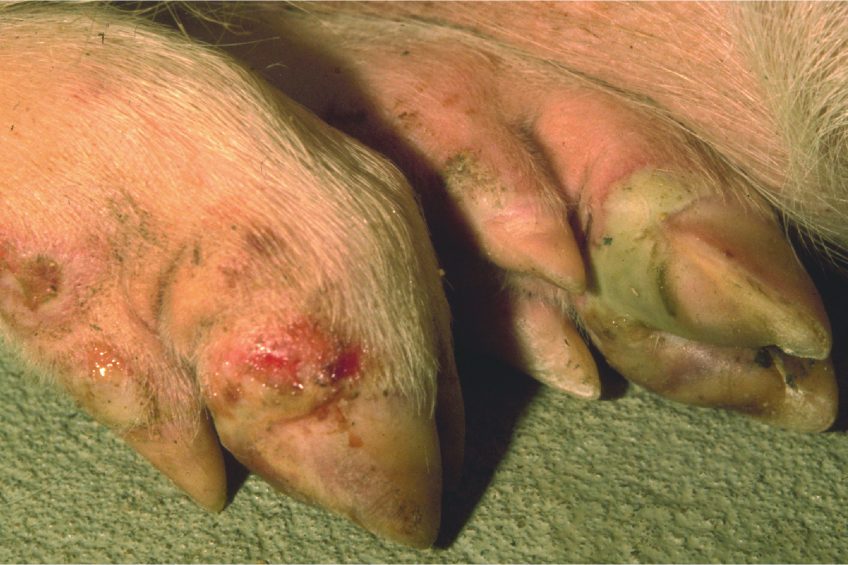Pigs can transmit FMD prior to signs of sickness

Foot-and-Mouth Disease (FMD) virus spreads much more aggressively in pigs than previous research suggests, according to a new study by US Department of Agriculture (USDA) scientists.
The study, recently published in Scientific Reports, a publication by Nature, shows that pigs infected with the FMD virus were highly contagious to other pigs just 24 hours after infection – long before showing any clinical signs of infection such as fever and blisters.
FMD: Most important foreign disease
Foot-and-Mouth Disease continues to be the most important foreign disease of livestock worldwide, said Jonathan Arzt, lead investigator and veterinary medical officer with USDA’s Agricultural Research Service (ARS) in a news release at the service’s website.

Blisters at pig claw. Photo: Central Veterinary Institute, the Netherlands
Prior to this research, it was believed that transmission of FMD did not occur during the pre-clinical phase – before visible signs of sickness. It means that vaccinated pigs still shed infectious virus and potentially transmit infection, according to Mr Arzt.
This research is critical for infectious disease experts, Mr Arzt said on the website. A variety of disease-dynamics models have been developed in recent years to identify critical targets for control efforts, predict impacts and estimate resource requirements for specific outbreak scenarios for FMD. However, none of these models included the impact of preclinical transmission.
Just under 10 years ago, South Korea experienced an FMD outbreak. This is how the country bounced back
Mathematical model to estimate FMD occurrence
Working with scientists at the Center for Epidemiology and Animal Health in USDA’s Animal and Plant Health Inspection Service (APHIS), Mr Arzt and his team used a mathematical modelling approach to estimate the occurrence of FMD preclinical transmission amongst pigs. They found that transmission occurred about 1 day prior to development of visible signs of disease.
This updated disease data was then incorporated into a 2nd model that simulates disease spread. The results showed that simulation of FMD outbreaks in the US pig production sector, including a preclinical infectious period of 1 day, would result in a 40% increase in the number of farms affected. That’s 166 additional farms and more than 664,000 pigs euthanised compared to the existing scenario of no preclinical transmission, Mr Arzt added.
Read more on pig health at the Pig Progress Health Tool
A well-controlled FMD outbreak
Failure to account for information like this could make the difference between a limited, well-controlled FMD outbreak in the USA and a nationwide catastrophe, he added.
The goal is to prevent FMD from invading the United States and to be prepared if it enters the country, Mr Arzt said. The United States has not had an FMD outbreak since 1929.











